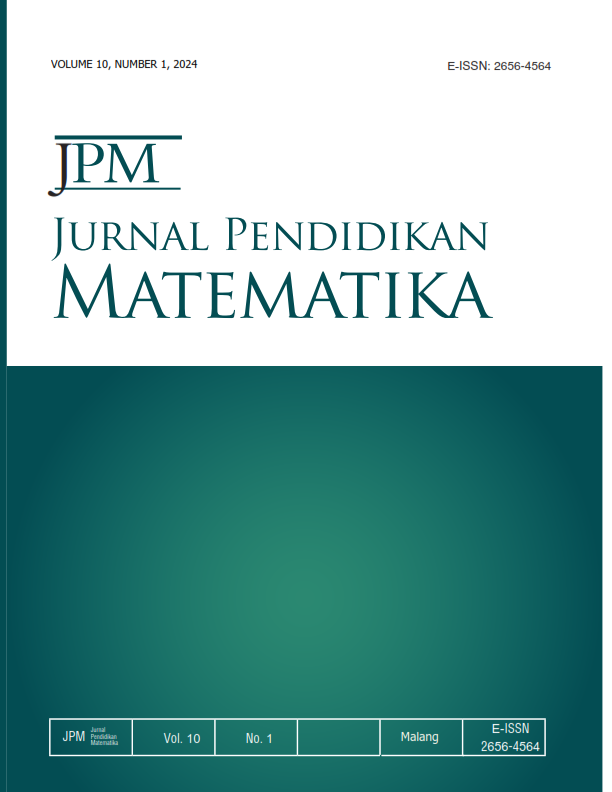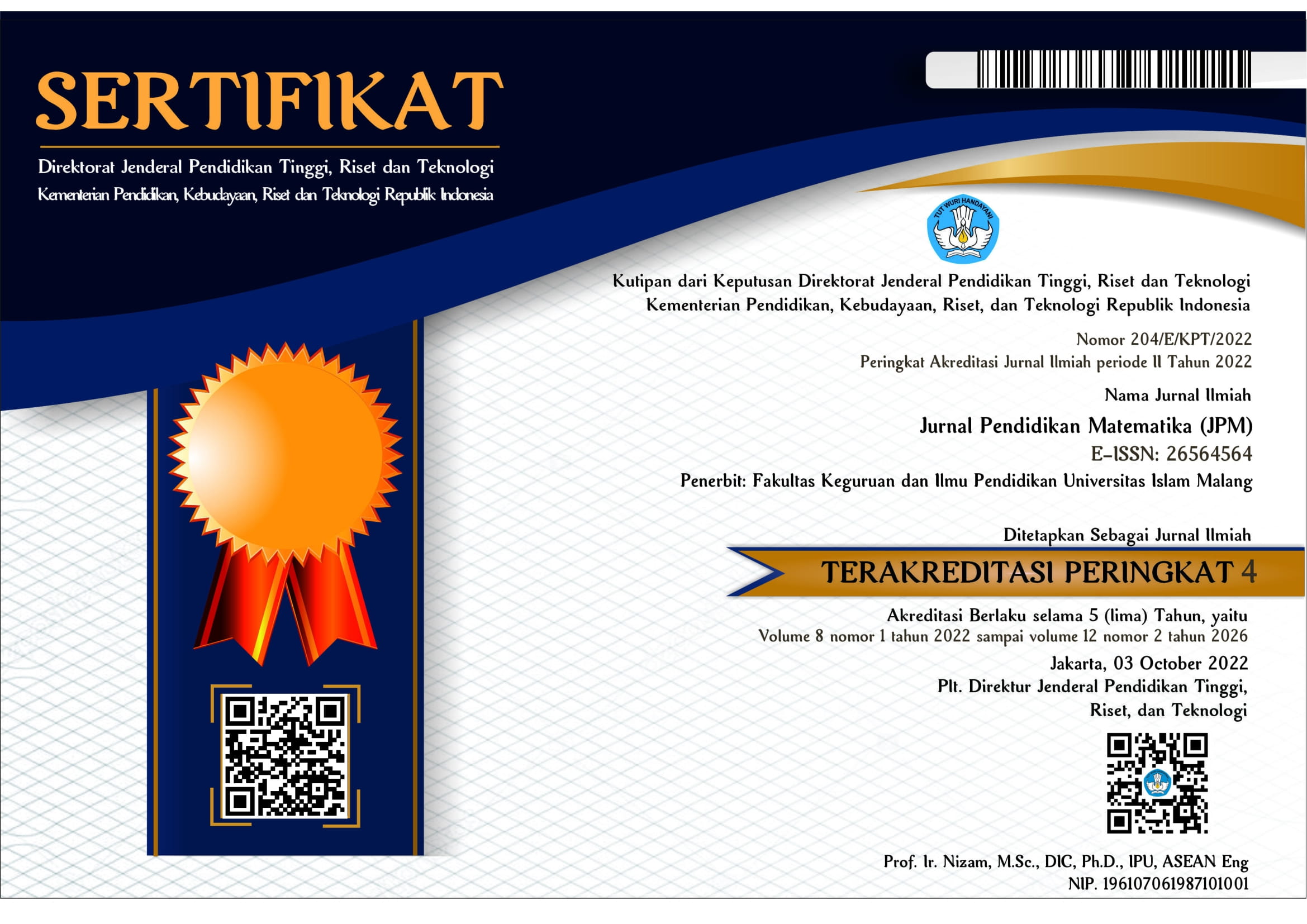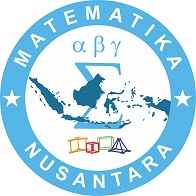The Influence of The Use of Canva-Based Video Learning Media on The Mathematical Problem-Solving Ability of Class XII Students of SMA Negeri 1 Air Joman
DOI:
https://doi.org/10.33474/jpm.v10i1.21555Keywords:
Learning Video Media, Mathematical Problem Solving AbilityAbstract
This research aims to determine the effect of using Canva-based video learning media on the mathematical problem solving abilities of class XII students at SMA Negeri 1 Air Joman. This type of research is quasi-experimental with a two-group pretest and posttest research design. The population in this study were all students of class XII Science consisting of 3 classes. The research samples used were 2 classes (Class XII IPA-2 and XII IPA-3) with 30 students in each class. In class XII IPA-3 was an experimental class using Canva-based learning video media and in class XII-2 as a control class without using Canva-based learning video media. After the learning was completed, a posttest was obtained with an average result for the experimental class of 80.5 and the control class of 76.4. The t-test results obtained t_count (3.774)> t_table (2.001). H_a is accepted, thus there is a positive and significant influence in the use of Canva-based video learning media on the mathematical problem-solving abilities of class XII students at SMA Negeri 1 Air Joman.
References
Agustini, K., & Ngarti, J. G. (2020). Development of Learning Videos to Increase Student Learning Motivation Using the R & D Model. Scientific Journal of Education and Learning, 4 (April 2020), 62–78. https://ejournal.undiksha.ac.id/index .php/JIPP/article/download/18403/1 4752
Anisah, H., and Mawaddah, S., (2015), Students' Mathematical Problem Solving Ability in Mathematics Learning Using Generative Learning Models in Middle Schools, EDU-MAT Journal of Mathematics Education, 3 (2): 166-175.
Batubara, H. H., & Ariani, D. N. (2016). Utilization of Videos as Elementary/MI Mathematics Learning Media. Muallimuna: Journal of Madrasah Ibtidaiyah, 2(1), 47. https://doi.org/10.31602/muallimun a.v2i1.741
Hijjah, I.S., and Sopiany, H.N., (2016), Using the TTW (Think-Talk-Write) Strategy with a Contextual Approach in Improving Problem Solving Abilities and Mathematical Disposition of MTsN Rawamerta Karawang Students, Journal of Education and Community Empowerment, 9 (2): 268-276.
Fauziyyah, Z. (2019). Development of Learning Video Media to Improve Listening and Speaking Skills of Class III Students of Sdn Merjosari 2 Malang [Maulana Malik Ibrahim State Islamic University]. Http://Etheses.Uin-Malang.Ac.Id/16642/
Fikri, Hasnul and Ade Sri Madona. (2018). Development of Interactive Multimedia Based Learning Media. Yogyakarta: Blue Ocean
Handayani, D., & Rahayu, D. V. (2020). Development of Android-Based Interactive Learning Media Using Ispring and Apk Builder for Class X Mathematics Learning Vector Projection Material. M A T H L I N E Journal of Mathematics and Mathematics Education, 5(1), 12– 25. https://doi.org/10.31943/mathline. v5i1.126
Harefa, D., & Laia, T. H. (2021). Audio Video Learning Media on Students' Mathematical Problem Solving Ability. AKSARA: Journal of Non-formal Education Science, 7(2):329-338.
Jamaliyah, R., & Wulandari, N. F. (2022). Implementation of E-Learning Based Learning Videos to Increase Interest in Learning Mathematics for Class Xi Man Purworejo Students. Journal of Equation, 5(1), 41–50.
Maharani, H. R., Ubaidah, N., Basir, M. A., Wijayanti, D., Kusmaryono, I., & Aminudin, M. (2022). Developing Teacher Professionalism Through Digital Comic Training with Canva for Education. Dinamisia: Journal of Community Service, 6(3), 760–768. https://doi.org/10.31849/dinamisia.v6i3.10084
Nasution, U.S., (2016), Differences in the Mathematical Problem Solving Abilities of Students Taught Using the STAD and NHT Learning Models, Journal of Mathematics Pedagogic, VII (1): 51-57.
Laia, H. (2019). The Relationship between Achievement Motivation and Mathematics Learning Outcomes in the Main Material of Calculating Operations in Algebraic Forms for Class VII Students of SMP Negeri 1 Teluk in the 2018/2019 Academic Year. Journal of Education and Development, South Tapanuli Education Institute, 7(4).
Maulani, S., Nuraisyah, N., Zarina, D., Velinda, I., & Aeni, A. N. (2022). Analysis of the Use of Video as an Integrated Learning Media on Student Learning Motivation. Indonesian Journal of Education and Technology, 2(1), 539–546. https://doi.org/10.52436/1.jpti.134
Octavyanti, N. P. L., & Wulandari, I. G. A. A. (2021). Development of Learning Videos Based on a Contextual Approach in Fourth Grade Elementary School Mathematics Subjects. Undiksha Edutech Journal, 9(1), 66–74. https://doi.org/10.23887/jeu.v9i1.32 223
Sirait, E. D. (2016). The Influence of Learning Interest on Mathematics Learning Achievement. Formatif: Scientific Journal of Mathematics and Natural Sciences Education, 6(1), 35– 43. https://doi.org/10.30998/formatif.v6 i1.750
Sudjana, (2005), Statistical Methods, Tarsito, Bandung.
Sugiyono, S. (2012). Educational Research Methods (Quantitative, Qualitative, and R&D). Bandung: Alphabeta.
Winarni, S., Kumalasari, A., Marlina, M., & Rohati, R. (2021). Effectiveness of Mathematics Learning Videos to Support Students' Numeracy and Digital Literacy Abilities. AKSIOMA: Journal of the Mathematics Education Study Program, 10(2), 574. https://doi.org/10.24127/ajpm.v10i2 .3345
Wisada, P. D., Sudarma, I. K., & Yuda S, A. I. W. I. (2019). Development of Character Education-Oriented Learning Video Media. Journal of Educational Technology, 3(3), 140. https://doi.org/10.23887/jet.v3i3.21 735
Zetriuslita, (2015), Problem Based Learning in Developing Problem Solving Abilities and Mathematical Disposition in Mathematics Learning, Journal of Mathematics Pedagogic, VI (1): 75-86.
Downloads
Published
How to Cite
Issue
Section
License
Copyright (c) 2024 Dewi Astuti, Eva Margaretha Saragih, Nova Eliza Silaen

This work is licensed under a Creative Commons Attribution 4.0 International License.






_-_Copy.jpg)
.jpg)
.jpg)










